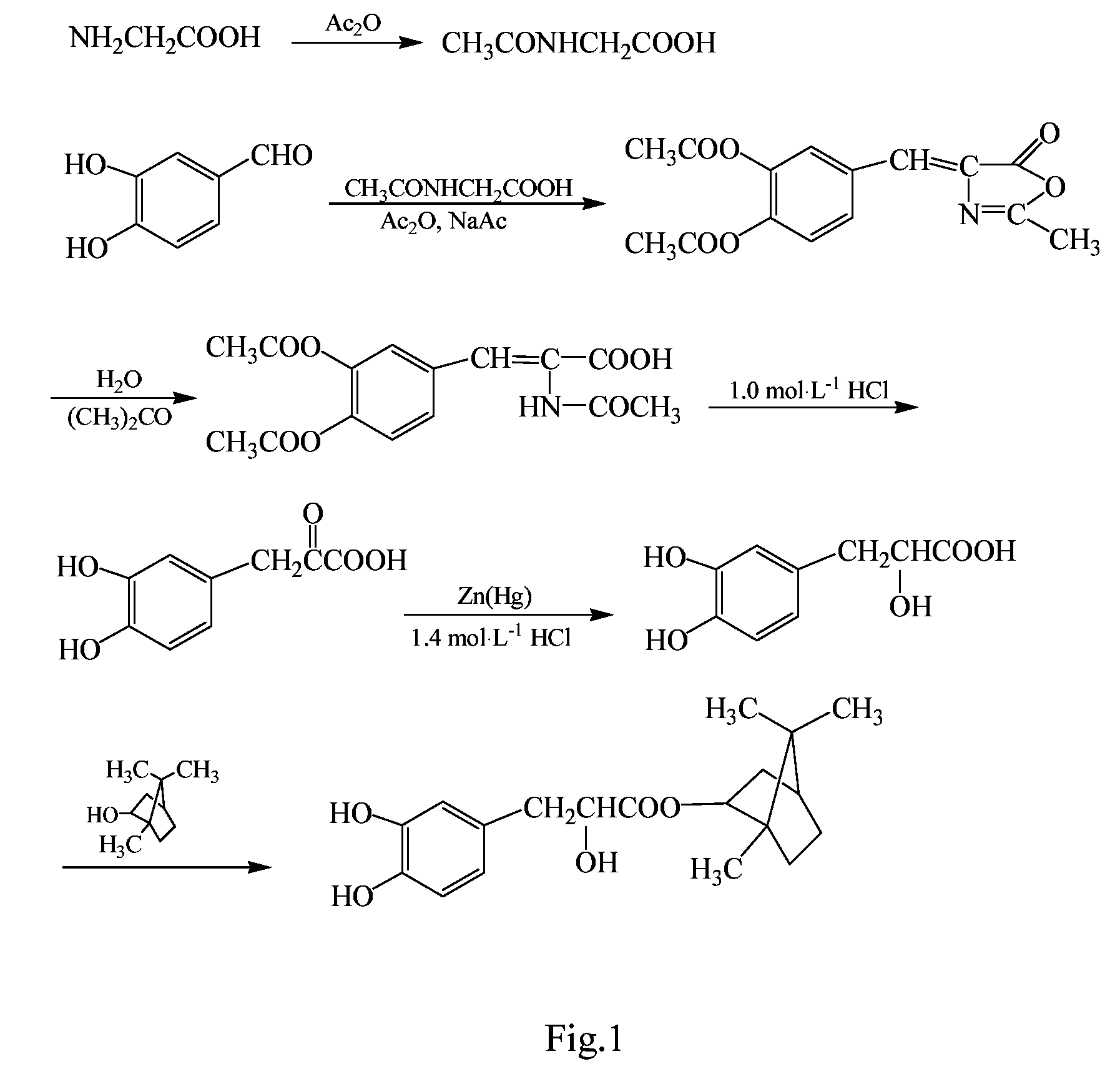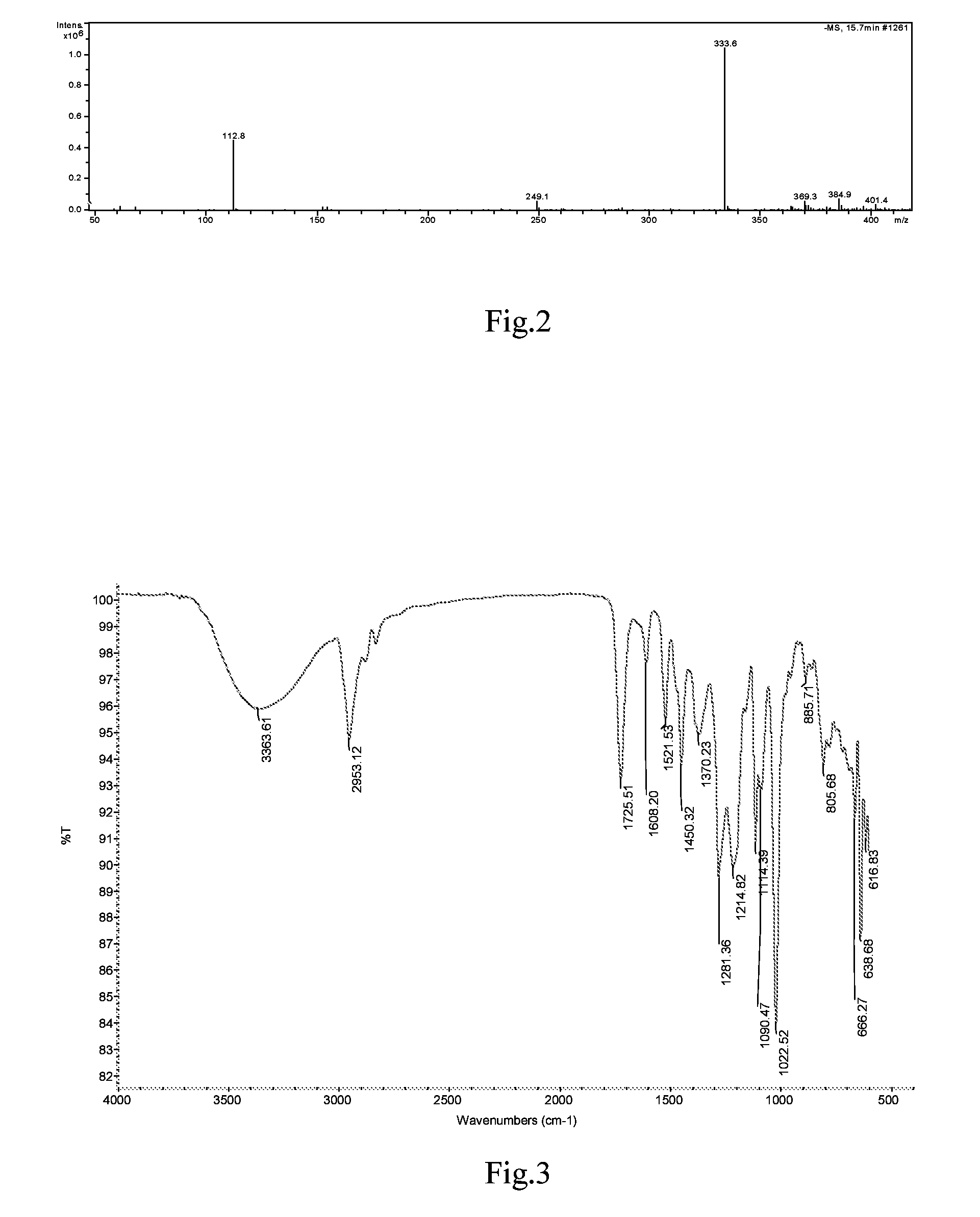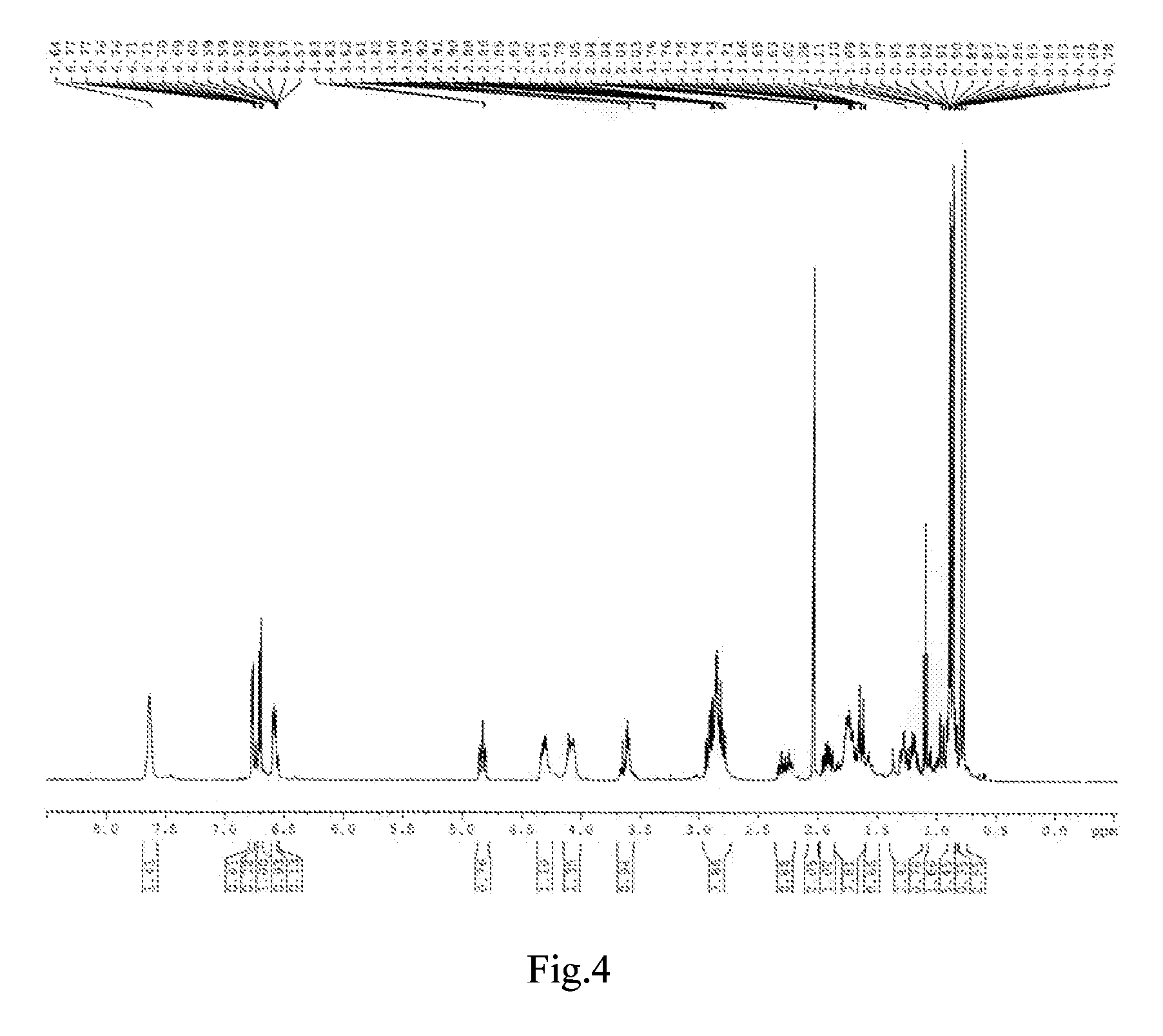Substituted β-phenyl-α-hydroxy-propanoic acid, synthesis method and use thereof
a technology of phenyl--hydroxy-propanoic acid and substituted phenyl--hydroxylpropionic acid, which is applied in the field of substituting phenyl--hydroxylpropionic acid derivatives, and can solve problems such as undesirable potency
- Summary
- Abstract
- Description
- Claims
- Application Information
AI Technical Summary
Benefits of technology
Problems solved by technology
Method used
Image
Examples
example 2
Synthesis (II) of Bornyl β-(3,4-dihydroxylphenyl)-α-hydroxylpropionate Ester
[0055]The synthesis was performed through the same procedure of Example 1, except that 0.12 mol β-(3,4-dihydroxylphenyl)-α-hydroxylpropionic acid and 0.15 mol borneol were added to the three-necked flask, then 0.86 g p-toluene sulfonic acid as catalyst and 500 mL tetrahydrofuran were added, and the reaction was performed at 65° C. for 12 h. After the completion of the reaction, the reaction solvent was removed by vacuum distillation, and the resulting viscous substance was treated by vacuum (1.3×10−3 Pa) using an oil pump in a boiling-water bath to remove borneol, then 200 mL ethyl acetate was added. The resulting solution was washed with saturated NaHCO3 solution to remove unreacted β-(3,4-dihydroxylphenyl)-α-hydroxylpropionic acid and p-toluene sulfonic acid. The obtained ethyl acetate layer was concentrated under reduced pressure, resulting in a brown viscous substance, which was further separated by colu...
example 3
Synthesis (III) of Bornyl β-(3,4-dihydroxylphenyl)-α-hydroxylpropionate Ester
[0056]The synthesis was performed through the same procedure of Example 1, except that 0.1 mol β-(3,4-dihydroxylphenyl)-α-hydroxylpropionic acid and 0.12 mol borneol were added to the three-necked flask, then 1.33 g S2O82− / ZrO2 as catalyst and 400 mL 1,4-dioxane were added, and the reaction was performed at 100° C. for 8 h. After the completion of the reaction, the catalyst S2O82− / ZrO2 was removed by sucking filtration, and the solvent was removed by vacuum distillation, and the resulting viscous substance was treated by vacuum (1.3×10−3 Pa) using an oil pump in a boiling-water bath to remove borneol. The resultant black brown viscous substance was separated using column chromatography, obtaining a yellowish oil, which has the same mass spectrum and infrared spectrum as that in Example 1.
example 4
Synthesis (IV) of Bornyl β-(3,4-dihydroxylphenyl)-α-hydroxylpropionate Ester
[0057]The synthesis was performed through the same procedure of Example 1, except that 0.06 mol β-(3,4-dihydroxylphenyl)-α-hydroxylpropionic acid and 0.09 mol borneol were added to the three-necked flask, then 0.60 g aluminum trichloride as catalyst and 200 mL N,N-dimethylformamide as solvent were added, and the reaction was performed at 150° C. for 10 h. After the completion of the reaction, the solvent was removed by vacuum distillation, and the resulting viscous substance was treated by vacuum (1.3×10−3 Pa) using an oil pump in a boiling-water bath to remove borneol. The resultant black brown substance was separated using column chromatography, obtaining a yellowish oil, which has the same mass spectrum and infrared spectrum as that of Example 1.
PUM
| Property | Measurement | Unit |
|---|---|---|
| temperature | aaaaa | aaaaa |
| temperature | aaaaa | aaaaa |
| temperature | aaaaa | aaaaa |
Abstract
Description
Claims
Application Information
 Login to View More
Login to View More - R&D
- Intellectual Property
- Life Sciences
- Materials
- Tech Scout
- Unparalleled Data Quality
- Higher Quality Content
- 60% Fewer Hallucinations
Browse by: Latest US Patents, China's latest patents, Technical Efficacy Thesaurus, Application Domain, Technology Topic, Popular Technical Reports.
© 2025 PatSnap. All rights reserved.Legal|Privacy policy|Modern Slavery Act Transparency Statement|Sitemap|About US| Contact US: help@patsnap.com



